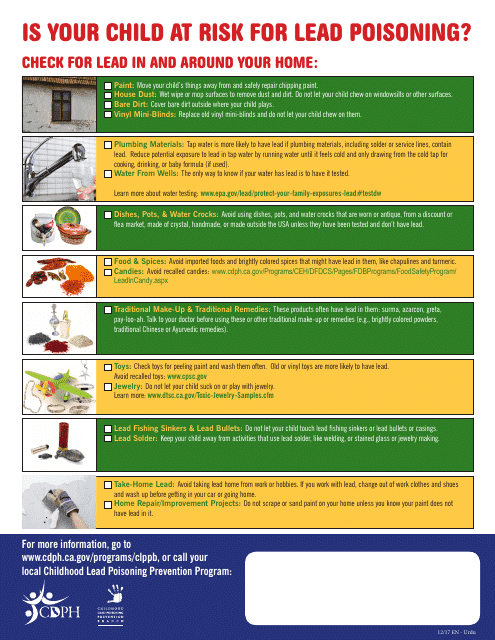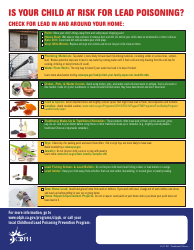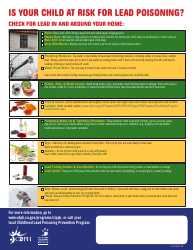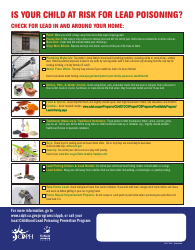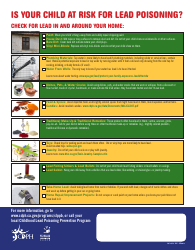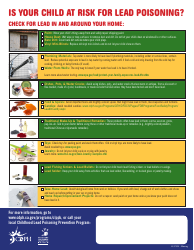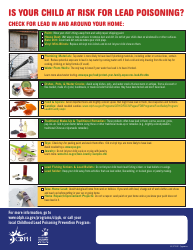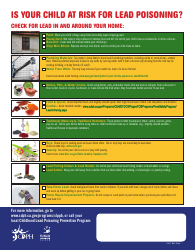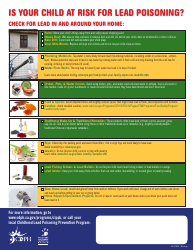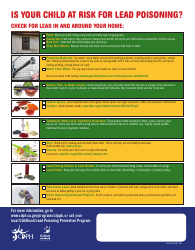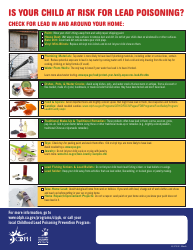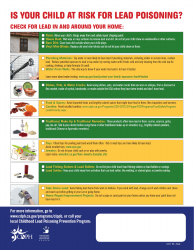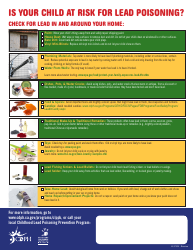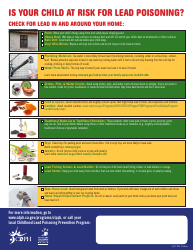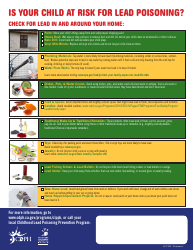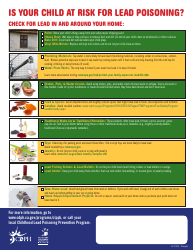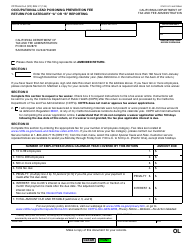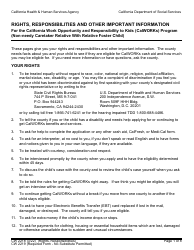Childhood Lead Poisoning Prevention Program Checklist - California (English / Urdu)
Childhood Prevention Program Checklist is a legal document that was released by the California Department of Public Health - a government authority operating within California.
FAQ
Q: What is the Childhood Lead Poisoning Prevention Program?
A: The Childhood Lead PoisoningPrevention Program is a program in California that aims to prevent lead poisoning in children.
Q: Why is lead poisoning a concern for children?
A: Lead poisoning can lead to developmental delays, behavioral problems, and other health issues in children.
Q: What does the Childhood Lead Poisoning Prevention Program do?
A: The program provides resources and information to help prevent lead exposure in children. It also conducts inspections and enforces lead-safe practices.
Q: Who is at risk of lead poisoning?
A: Children who live in older homes or buildings with lead-based paint or contaminated soil are at a higher risk of lead poisoning.
Q: What are the symptoms of lead poisoning in children?
A: Symptoms can include abdominal pain, vomiting, seizures, developmental delays, and learning difficulties.
Q: How can lead exposure be prevented?
A: Prevention measures include keeping homes clean and dust-free, washing hands frequently, and avoiding products that may contain lead.
Q: What should I do if I suspect my child has been exposed to lead?
A: Contact your healthcare provider and ask for a blood lead test. They can help determine if your child has been exposed to lead.
Form Details:
- Released on December 1, 2017;
- The latest edition currently provided by the California Department of Public Health;
- Ready to use and print;
- Easy to customize;
- Compatible with most PDF-viewing applications;
- Fill out the form in our online filing application.
Download a printable version of the form by clicking the link below or browse more documents and templates provided by the California Department of Public Health.
